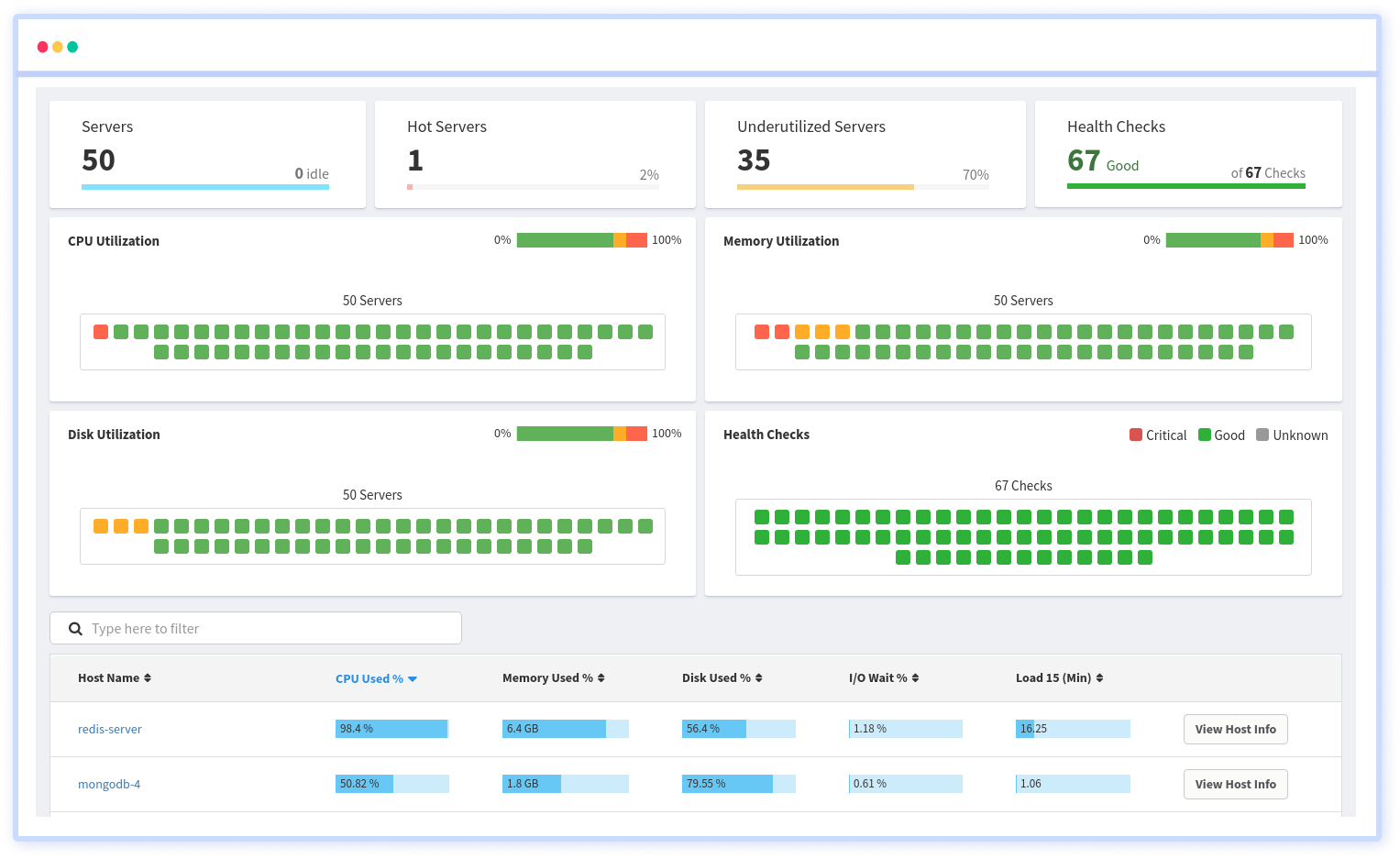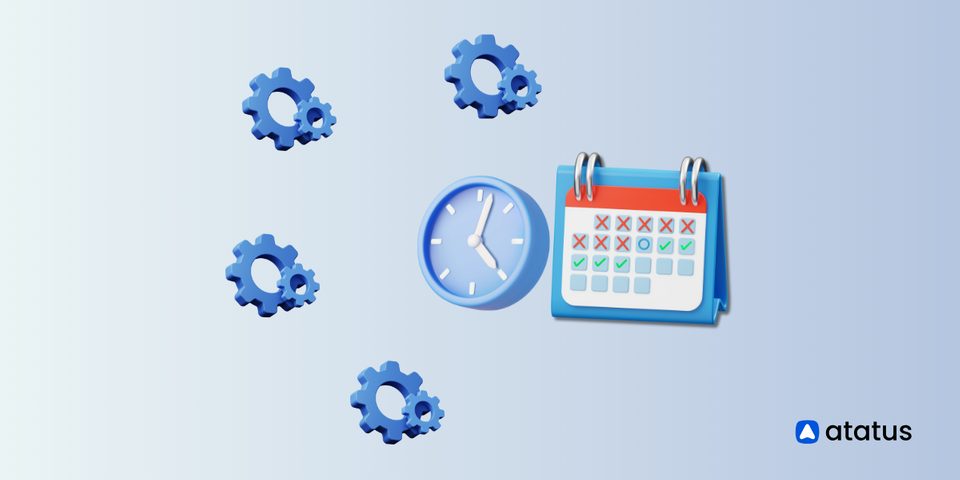Cron Jobs Explained
Have you ever wondered how your computer manages to do certain tasks all by itself, like sending you reminders or cleaning up temporary files?
Let's take a simple example, suppose you want your computer to automatically delete temporary files every Sunday at midnight. How does it know when to do this, and how does it do it without you having to lift a finger?
Well, let me explain. This is where something called a "cron job" comes into play. Cron jobs are like helpers that your computer uses to perform tasks at specific times without needing your input. They're commonly used in Unix-like operating systems such as Linux and macOS.
In this blog, let's explore the fundamentals of cron jobs, exploring how they work and how you can use them to automate tasks on your computer.
Table of Contents
- What is a Cron Job?
- How to Schedule a Cron Job?
- Creating Short Interval Cron Jobs with Bash
- How to Automate Cron Jobs in cPanel?
- Managing Cron Jobs via Command Line
- Effective Methods for Smooth Operation
- Deleting Scheduled Tasks
What is a Cron job?
Cron job is an automated tasks scheduled to run at specific times or intervals on Unix-like operating systems. The term "cron" comes from the word "chronos," which means "time" in Greek.
These jobs facilitate the automation of routine processes, such as system maintenance, backups, and data processing, enhancing efficiency and reliability by reducing manual intervention.
A cron job consists of two main parts:
- Schedule: This specifies when the job should run. It's defined using a cron expression, which is a string made up of five fields representing minute, hour, day of month, month, and day of week. Each field can contain either a specific value or (*) to indicate any value.
- Command: This is the actual task or script that the cron job should execute at the scheduled time.
How to Schedule a Cron Job?
As we already know cron job scheduling is a time-based task automation system, it employs a specific syntax to define when tasks should execute, utilizing minute, hour, day, month, and day of the week fields.
Each field dictates a time aspect for job execution, enabling precise scheduling. Let us see some common scheduling patterns used in cron job scheduling.
The general syntax for a cron job involves combining minute, hour, day of the month, month, and day of the week fields to specify when a task should be executed.
* * * * * command to be executed
- - - - -
| | | | |
| | | | +----- Day of the week (0 - 7) (Sunday is 0 or 7)
| | | +------- Month (1 - 12)
| | +--------- Day of the month (1 - 31)
| +----------- Hour (0 - 23)
+------------- Minute (0 - 59)
You can specify a custom schedule by adjusting these fields according to your requirements.
Daily: Run a job every day at a specific time.
0 3 * * * # Runs at 3:00 AM every day
Weekly: Run a job on a specific day of the week.
0 4 * * 1 # Runs at 4:00 AM every Monday
Monthly: Run a job on a specific day of the month.
0 5 1 * * # Runs at 5:00 AM on the 1st day of every month
Hourly: Run a job every hour.
0 * * * * # Runs at the beginning of every hour
These are just a few examples. You can combine different values in each field to create more complex schedules.
You can
Creating Short Interval Cron Jobs with Bash
Running cron jobs at intervals of every 5, 10, or 30 seconds isn't directly supported by the cron utility, which typically operates with a minimum granularity of one minute.
However, you can achieve similar functionality by using other methods, such as creating a script that runs continuously and sleeps for the desired interval before executing the job.
One common approach is to use a while loop combined with the sleep command. Here's how you can set up a script to run a command every 5, 10, or 30 seconds.
#!/bin/bash
while true; do
# Run your command here
command_to_run
# Sleep for the desired interval (5 seconds in this example)
sleep 5
done
The script starts with (#!/bin/bash) to indicate that it should be executed by the bash shell. The while true; do loop runs indefinitely (true is always true) until explicitly stopped.
Inside the loop, you place the command you want to run at the desired interval (command_to_run). After executing the command, the script sleeps for the desired interval using the sleep command (sleep 5 for 5 seconds).
You can modify the sleep duration to achieve different intervals. For example, to run the command every 10 seconds, change sleep 5 to sleep 10. Similarly, for 30 seconds, change it to sleep 30.
Then save the script to a file. The script will continuously run the specified command at the desired interval.
- This method will keep running indefinitely until explicitly stopped, so ensure that the script is managed properly.
- Depending on the system load and the time it takes to execute the command, the actual interval between command executions may vary slightly.
- Running tasks at very short intervals may not be suitable for all scenarios and may increase system load.
Using this approach, you can simulate cron-like behaviour for intervals shorter than a minute.
However, keep in mind that such frequent execution might not be suitable for all scenarios and could potentially impact system performance.
How to Automate Cron Jobs in cPanel?
You can automate routine website tasks effortlessly with Cron Jobs in cPanel. This user-friendly feature allows you to schedule commands or scripts to run at specific intervals, such as hourly or daily, without manual intervention.
Follow these simple steps to set up automated tasks and streamline your website management process effectively.
- Start by logging into cPanel using your web browser and provided login credentials. cPanel is a user-friendly web hosting control panel widely used for managing websites and server settings.
- Look for the "Cron Jobs" section within cPanel. It's typically located under advanced settings.
- Click on the "Cron Jobs" icon or link to access the settings page where you can configure scheduled tasks.
- Within the Cron Jobs settings, find the option to add a new Cron Job. This is where you'll input the details for your scheduled task.
- In the designated field, specify the command or script you want to execute. Ensure to provide the full path to the script if necessary.
- Choose the frequency at which you want the Cron Job to run. You can select common intervals like every minute, hour, day, week, or month, or define a custom schedule.
- Once you have entered the command and set the timing, save your settings by clicking the appropriate button.
- If you'd like to receive notifications regarding Cron Job output via email, you can customize this setting. Enter your preferred email address in the provided form field next to 'Email' and click 'Update Email' to save your preference.
- After saving, you should receive a confirmation message indicating that the Cron Job was successfully added. Verify the details to ensure accuracy.
Now you've successfully set up a command using the Cron Jobs tool within cPanel, allowing for automated execution of tasks according to your specified schedule.
Managing Cron Jobs via Command Line
Managing cron jobs involves using the crontab command-line utility, which allows users to edit, list, and execute scheduled tasks efficiently.
Understanding how to utilize crontab commands is essential for optimizing task automation and ensuring the smooth operation of system processes.
Commands for Managing Cron Jobs
- Opens the user's crontab file in the default text editor. This command allows the user to add, modify, or delete cron jobs.
crontab -e- This command lists the cron jobs configured for the current user. It provides a quick overview of existing cron jobs, facilitating monitoring and debugging of scheduled tasks.
crontab -l- This helps to display the cron jobs configured for the specified user ("username"). This command is helpful for the system administrators or users with appropriate permissions to check the scheduled tasks of other users.
crontab -u username -l- This command opens the specified user's crontab file in the default text editor, allowing administrators to edit their scheduled tasks.
crontab -u username -eAlthough the previous and current explanations may appear similar, they differ in the target user whose crontab file is accessed.
The previous one relates to the current user, while the current one involves accessing the crontab file of a specified user, allowing for centralized administration
Thus, managing cron jobs using the crontab command-line utility offers flexibility and control over scheduled tasks in Unix-like operating systems.
Effective Methods for Smooth Operation
Crons are really helpful, but sometimes they don't do what we want them to do. Luckily, there are effective methods you can use to troubleshoot them.
With these simple methods, you can figure out why your cron jobs aren't working right and get them back on track in no time.
- Make sure that the cron job is properly configured. Double-check the syntax in the crontab file (
crontab -e), ensuring that the timing settings and command syntax are correct. - Ensure that the user running the cron job has the necessary permissions to execute the command and access any required files or resources.
- If the cron job produces any output, such as error messages or debugging information, make sure to redirect it to a file so you can review it later.
- Run the command manually from the command line to see if it produces the expected result and if any errors occur. This can help isolate whether the issue is with the command itself or with cron.
- Double-check the command and file paths for any typos or mistakes. Even a small error can prevent the cron job from running successfully.
- Ensure that the system time and timezone are set correctly. Cron jobs rely on system time to determine when to run, so discrepancies in time settings can cause unexpected behavior.
- High system load or resource constraints can sometimes prevent cron jobs from running as scheduled.
By using these steps, you can find and fix most problems with cron jobs.
Deleting Scheduled Tasks
In managing cron jobs, it's crucial to not only schedule tasks but also to efficiently remove or update them when necessary. Deleting cron jobs ensures that outdated or unnecessary tasks do not clutter the system, improving resource utilization and maintaining a clean and organized scheduling environment.
Removing Specific Crontab Entries
- Remove all crontab entries
This command removes all the scheduled tasks for the current user.
crontab -r
- Remove specific crontab entry by line number
Replace <line_number> with the line number of the task you want to remove. This command lists the current crontab entries, removes the specified line, and then installs the modified crontab.
crontab -l | sed '<line_number>d' | crontab -
- Remove specific crontab entry by content
crontab -l | grep -v 'backup' | crontab -
This requires a more elaborate command using grep and sed. For example, to remove a task that contains the word "backup". This command lists the current crontab entries, filters out the lines containing the word "backup", and then installs the modified crontab.
These are some of the basic crontab commands that allow users to delete scheduled tasks either individually or as a whole.
Setting up a Cron Job to Delete Scheduled Tasks
Here is a simple example of setting up a cron job to delete scheduled task.
# Create a script to delete scheduled tasks
echo '#!/bin/bash' > delete_tasks.sh
echo 'crontab -l | grep -v "keyword_to_remove" | crontab -' >> delete_tasks.sh
chmod +x delete_tasks.sh
# Schedule the script to run daily at midnight
(crontab -l ; echo "0 0 * * * /path/to/delete_tasks.sh") | crontab -
This script creates a Bash script named delete_tasks.sh that removes scheduled tasks containing a specified keyword. Then, it schedules the script to run daily at midnight using a cron job.
Similarly you can adjust the keyword and path to the script as needed.
Wrapping Up
Cron jobs are like timers for your computer, automating tasks at set times. They consist of a schedule and a command. You can schedule tasks like backups or cleaning up files easily.
Troubleshooting helps fix any issues, while managing them efficiently ensures smooth operation. Monitoring resources and time settings is important for best results.
Overall, cron jobs make life easier by handling repetitive tasks, saving time and effort. By understanding how to schedule and manage them, users can simplify their workflow and focus on more important tasks.
Infrastructure Monitoring with Atatus
Track the availability of the servers, hosts, virtual machines and containers with the help of Atatus Infrastructure Monitoring. It allows you to monitor, quickly pinpoint and fix the issues of your entire infrastructure.
In order to ensure that your infrastructure is running smoothly and efficiently, it is important to monitor it regularly. By doing so, you can identify and resolve issues before they cause downtime or impact your business.

It is possible to determine the host, container, or other backend component that failed or experienced latency during an incident by using an infrastructure monitoring tool. In the event of an outage, engineers can identify which hosts or containers caused the problem. As a result, support tickets can be resolved more quickly and problems can be addressed more efficiently.
Start your free trial with Atatus. No credit card required.
#1 Solution for Logs, Traces & Metrics
APM
Kubernetes
Logs
Synthetics
RUM
Serverless
Security
More



